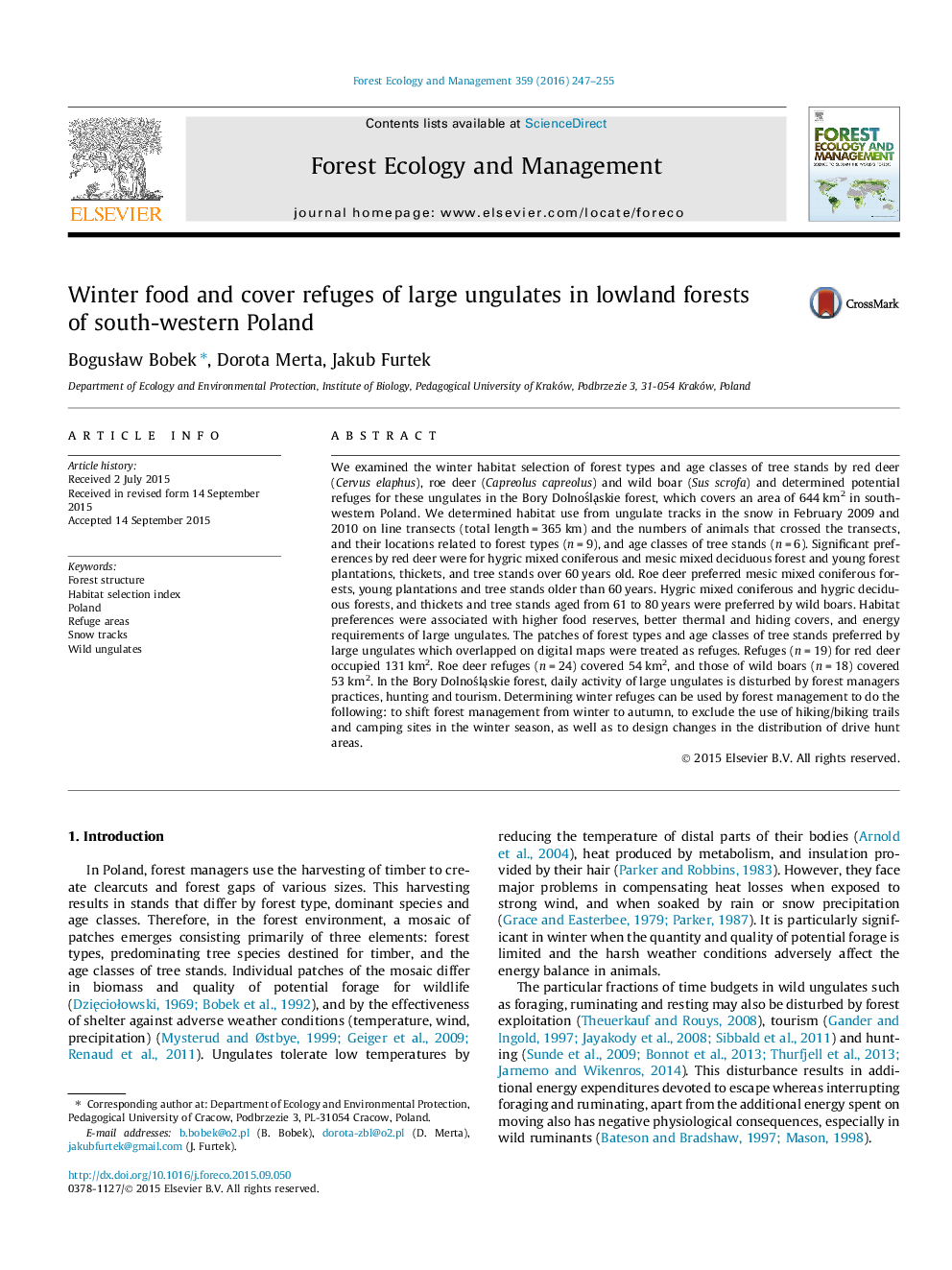| Article ID | Journal | Published Year | Pages | File Type |
|---|---|---|---|---|
| 6542669 | Forest Ecology and Management | 2016 | 9 Pages |
Abstract
We examined the winter habitat selection of forest types and age classes of tree stands by red deer (Cervus elaphus), roe deer (Capreolus capreolus) and wild boar (Sus scrofa) and determined potential refuges for these ungulates in the Bory DolnoÅlÄ
skie forest, which covers an area of 644 km2 in south-western Poland. We determined habitat use from ungulate tracks in the snow in February 2009 and 2010 on line transects (total length = 365 km) and the numbers of animals that crossed the transects, and their locations related to forest types (n = 9), and age classes of tree stands (n = 6). Significant preferences by red deer were for hygric mixed coniferous and mesic mixed deciduous forest and young forest plantations, thickets, and tree stands over 60 years old. Roe deer preferred mesic mixed coniferous forests, young plantations and tree stands older than 60 years. Hygric mixed coniferous and hygric deciduous forests, and thickets and tree stands aged from 61 to 80 years were preferred by wild boars. Habitat preferences were associated with higher food reserves, better thermal and hiding covers, and energy requirements of large ungulates. The patches of forest types and age classes of tree stands preferred by large ungulates which overlapped on digital maps were treated as refuges. Refuges (n = 19) for red deer occupied 131 km2. Roe deer refuges (n = 24) covered 54 km2, and those of wild boars (n = 18) covered 53 km2. In the Bory DolnoÅlÄ
skie forest, daily activity of large ungulates is disturbed by forest managers practices, hunting and tourism. Determining winter refuges can be used by forest management to do the following: to shift forest management from winter to autumn, to exclude the use of hiking/biking trails and camping sites in the winter season, as well as to design changes in the distribution of drive hunt areas.
Keywords
Related Topics
Life Sciences
Agricultural and Biological Sciences
Ecology, Evolution, Behavior and Systematics
Authors
BogusÅaw Bobek, Dorota Merta, Jakub Furtek,
